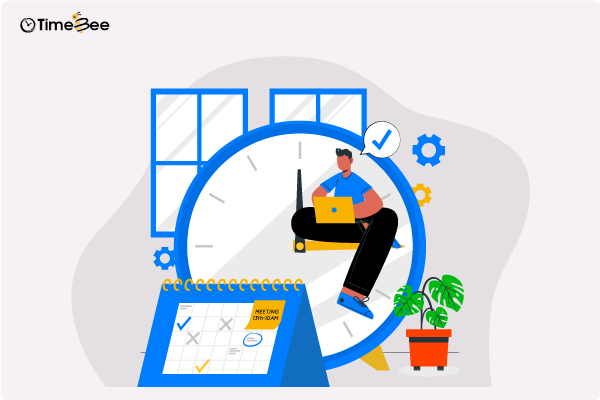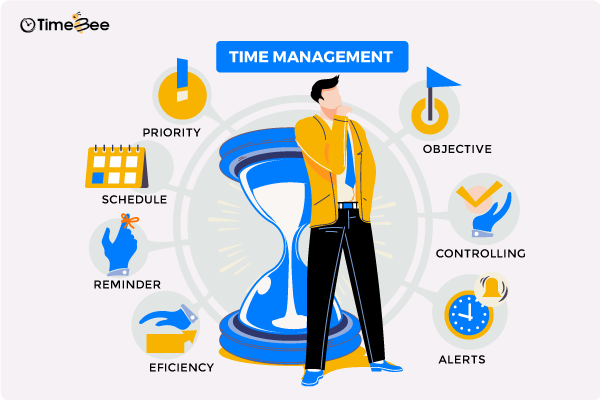What Is Context Switching and How It Impacts Your Productivity
During a typical workday, you must perform activities or tasks to achieve your productivity goals and keep things moving. After all, maintaining a certain level of productivity is essential for achieving a profitable outcome. However, if you’re in a management or supervisory role, you must take on several responsibilities to ensure you and your employees are heading in the right direction. This means that task switching does become inevitable, which can hinder progress. Indeed, task switching in a nonstructured way becomes a major productivity problem. The continuous back-and-forth between activities is called ‘context switching’ and can destroy your productivity immediately. Let’s dive deeper into how it can affect your output. What is Context Switching? Context switching refers to shifting attention between tasks or projects when not needed or without completing the activity you are doing at the moment. Usually, when the switch happens, it derails you from a thought process, and you lose focus. While working in an office or working from home, you must complete certain major tasks and others that supplement them. These include meetings, emails, monitoring tasks, and extensive communication. But minor distractions, like a social media notification can disrupt your flow. To respond to this notification, you stop doing your work and start answering that message, which may lead to a conversation that completely stonewalls what you were previously doing. When you eventually do get back to your task, you will find that you’re much less productive. What Causes Context Switching? Context Switching does not happen intentionally. It is generally caused by mismanagement and psychological issues. It is fixable, but first, you must understand its underlying causes. Multitasking Context switching is often confused with multitasking, but there’s a fundamental difference. Multitasking involves completing numerous tasks simultaneously, while context switching involves shifting focus completely between work activities. One may argue that multitasking is a semblance of efficiency; however, in reality, it is one of the significant causes of unproductivity. Research shows that 97.5% of people can’t multitask effectively. The reason is that, logically, your mind focuses on a point per second, so you are doing only one task at a time. So, if you attend a call while typing an email, you concentrate on what to write or say. So, sometimes you believe you are multitasking, but you have already transitioned to context switching. Work Mismanagement Work Mismanagement is planning your daily work without any research or reasoning. If your daily tasks lack structure and clarity, you are prone to context switching. For example, you know your daily work requires meetings and communication, but you have not made your schedule more flexible to accommodate unforeseen tasks. So when you leave for a meeting without wrapping up what you were doing, you lose focus entirely. Poor Time Management Similar to work mismanagement, mismanaged time also leads to you taking on many responsibilities all at once. When you juggle your tasks without a clear plan or schedule, you lose focus. Time Mismanagement includes careless allocation of time to tasks, making a tight schedule that is not flexible, or assigning time-based on assumptions rather than using concrete data. In all these scenarios, you end up with more work and keep switching between tasks to meet deadlines. In addition, when you take on too many responsibilities, disregarding your time, you try to complete them together and end up with context-switching. Short Attention Span Shot attention span is the inability to stay focused on one task longer. Individuals with short attention spans keep switching between tasks, leading to context switching. Sometimes, it is not a cognitive issue; it can be boredom, lack of interest, work overload, or distractions. Maintaining focus is essential to completing tasks on time. If you are constantly distracted, you will experience frequent shifts in attention. You will always need more time to meet deadlines, leading to work pileups and context switching. How Does Context Switching Destroy Productivity? Context switching is often considered a productivity killer and happens for various reasons. Understanding these causes can help individuals and organizations to formulate and implement strategies to reduce context switching effectively. Here are some common causes of context switching: Efficiency Reduction Efficiency requires you to complete your tasks on time without compromising quality. Constantly jumping from one task to another without finishing it will confuse and disrupt your workflow. It is natural for your brain to take time to reorient itself and get back to the task at hand, resulting in decreased overall output. The brain’s reorientation also results in impaired decision-making. Making informed choices or prioritizing effectively becomes challenging with a cluttered frame of mind. You are unable to decide which task to complete first, which leads to subpar outcomes. Increased Errors Context switching also leads to an increase in errors and mistakes. When your attention is divided between multiple tasks, you overlook important details and end up making careless mistakes. Your mistakes may result in work stress and an increased workload as you redo your tasks. In addition, you will have to leave your current activity and focus on the work you have already done, compromising your daily performance. Cognitive Health Maintaining physical and mental health is the only way to stay productive at work. If your efficiency is reduced, you make mistakes, and you have an excessive workload, your attention will be constantly divided. You will have a thousand things on your mind, including the pressure to be good at work. To keep up with competing demands, you constantly juggle tasks, increasing pressure and stress levels. When the stress levels are high, you won’t be able to maintain the balance that makes you productive. Measures to Prevent Context Switching Once you are familiar with the causes and their impact, it becomes easier to identify and implement preventative measures to reduce context switching. Here are a few to get you started. Identify Context Switching Patterns To eliminate context switching from your work, first, you need to identify what is causing it. Everyone has a different trigger, and to
What Is Context Switching and How It Impacts Your Productivity Read More »










